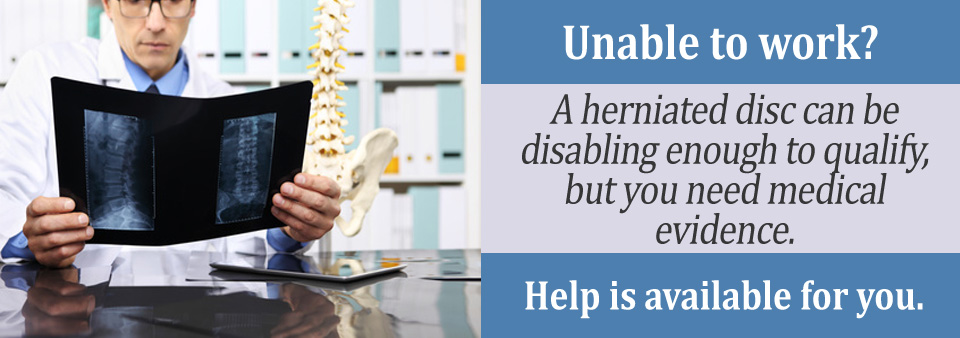It can happen when you try to move a dining room chair. It can also happen on the job, especially if you work in a labor intensive industry such as construction or landscaping. As potentially one of the most painful medical conditions, a herniated disc impacts more than three million Americans per year.
Although a majority of herniated disc sufferers experience minor to moderate pain, there is a large segment of patients that undergo one or more surgeries to alleviate intense pain.
If you have suffered from a herniated disc, even minor symptoms can negatively impact your work performance. Created by the Social Security Administration (SSA), the Social Security Disability Insurance (SSDI) helps Americans that suffer from chronically painful herniated disc symptoms receive financial compensation to cover medical bills, as well as common daily expenses.
An Overview of a Herniated Disc
The back consists of a uniform column of bones referred to as vertebrae. Soft, sponge-like discs sit between the vertebrae to provide support for the back. When one or more discs experiences intense pressure, the discs can crack and the soft, sponge-like material can flow out of the discs.
Herniated discs happen in all areas of the back, although the most common occurrence is located in the lumbar region of the lower back. Common symptoms of a mild herniated disc are numbness and dull pain in the lower back and upper legs.
Physical therapy for the medical condition includes the application of ice and heat, as well as the prescription of anti-inflammatory medicines.
Medical Documents Required for a SSDI Application
The most severe cases of a herniated disc can leave patients jobless for more than 12 months. If a herniated disc has sidelined your from your career for at least 12 months, you need to submit certain medical documents with your SSDI application.
- Diagnosis confirmation issued by your physician
- Medical report highlighting your motor and sensory skills
- All imaging tests like MRIs and CT scans
- Notes taken during surgery
- Physical therapy reports
- Notes presented by other health care professionals
You will need to submit the names, addresses, and phone numbers of every doctor, caseworker, and physical rehabilitation specialist. Physician notes should explain how the doctor reached a diagnosis, as well as provide detailed information about your treatment regimen.
You will also have to submit a list of medications prescribed for the herniated disc and the results of all lab tests. Cultivating a close relationship with your team of medical providers is essential in ensuring you submit the proper documents with your SSDI application.

Additional Required Information
The SSA requires SSDI applicants to demonstrate they worked at one time in a full time job. You have to submit evidence that the onset of herniated disc symptoms occurred at the same time you started to miss work.
The SSA wants to know the name of your employer and the type of work you performed to understand your professional background. You must attach the most recent W-2 form to your SSDI application and the federal tax return you filed within the past year.
Government regulations require SSDI applicants to include their birth certificate and Social Security number as well.
A licensed Social Security attorney can help you submit every medical document required by the SSA. He or she is there to assist you through the entire process, from the day you suffered the herniated disc to the day you send your SSDI application through certified mail.
Social Security lawyers typically work on a contingency fee basis. This means you pay nothing up front and your attorney receives nothing until you receive your SSDI benefits.